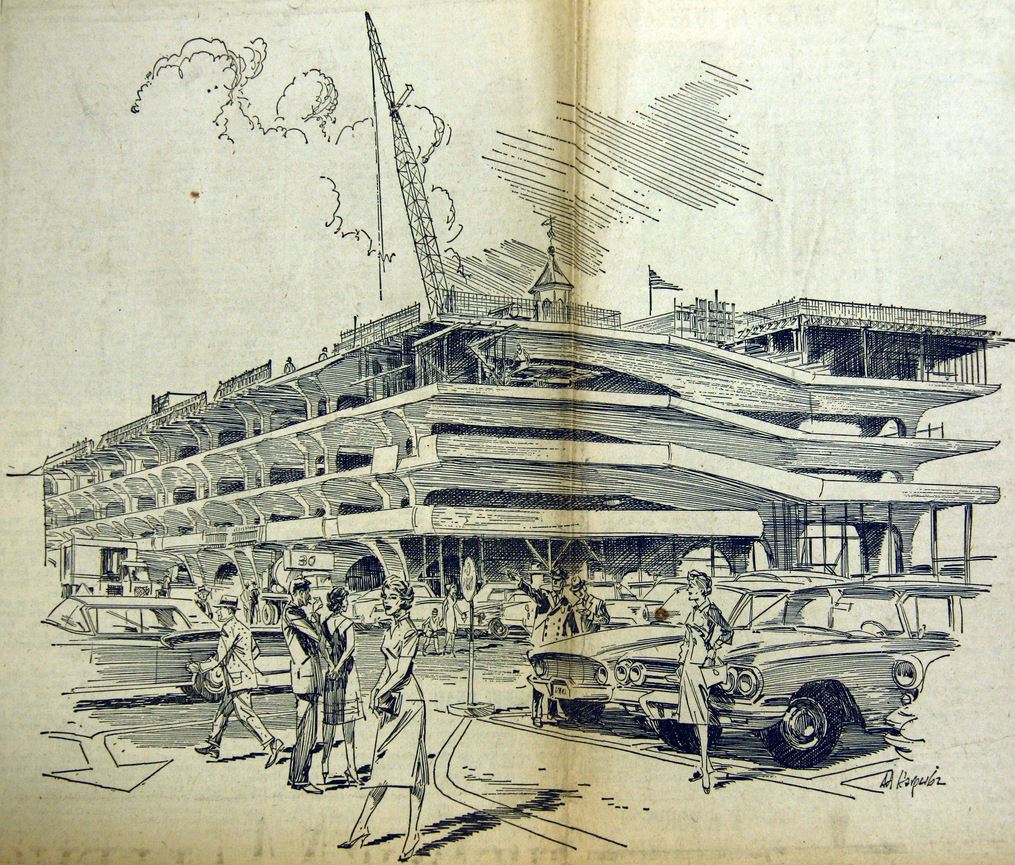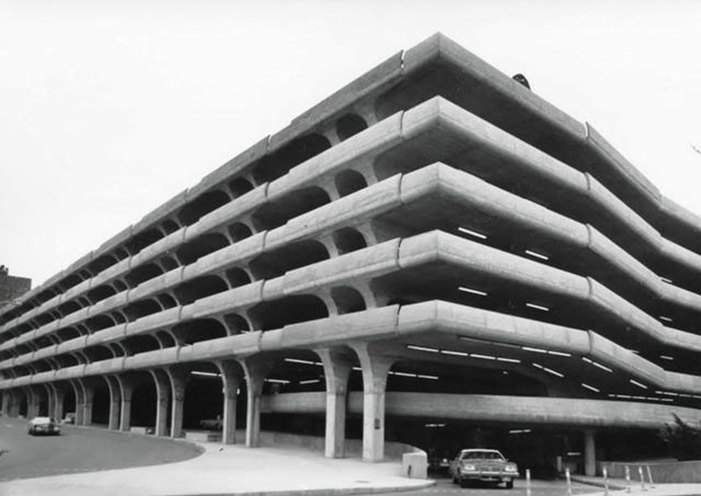“When the New Haven parking garage was being constructed, the remainder of the buildings in the adjacent blocks was not determined. They should have been designed to dominate the parking garage…The parking garage is a peculiar twentieth-century phenomenon. The one in New Haven comes from the design of throughways. Most parking garages are merely skeletal structures which didn’t get any walls. They are just office building structures with the glass left out. I wanted to make a building which said it dealt with cars and movement. I wanted there to be no doubt that this is a parking garage.”
Cuando el parking de New Haven estaba siendo construido, los bloques adyacentes todavía estaban vacíos. Su diseño debería haber estado pensado en poder dominar la presencia del propio parking… La tipología del parking es un fenómeno peculiar del Siglo XX y mi proyecto de New Haven se basa en el diseño de las autopistas. La mayoría de los parkings son simples estructuras que no tienen ninguna partición, como edificios de oficinas sin el recubrimiento de vidrio. Yo quería hacer un edificio que tuviese una clara influencia por los coches y sus movimientos. Que no hubiese ninguna duda de que era un parking.”
Conversations with Architects : Philip Johnson, Kevin Roche, Paul Rudolph, Bertrand Goldberg, Morris Lapidus, Louis Kahn, Charles Moore, Robert Venturi & Denise Scott BrownCook, John Wesley. New York: Praeger, 1973

The six-story Temple Street parking garage is fully made by reinforced concrete using organic forms to connect the different elements. The shapes are made with wood form-work creating a very powerful texture in the whole interior. The rails are also made in concrete (what it creates a powerful form from the exterior) and they are later connected to the parking slabs.
El Parking de New Haven, de seis plantas, está construido totalmente en hormigón armado utilizando formas orgánicas para conectar los distintos elementos. El hormigón se enconfra con tablones de madera provocando una textura visualmente muy potente en todo el interior. Las barandillas también se realizan en hormigón (lo que genera un efecto visual muy masivo desde el exterior) y se conectan a las propias losas del parking.






















